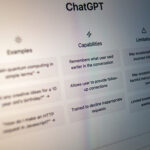There is no doubt having an inbound marketing strategy is essential to every business, whether a large enterprise or small business. Statista surveyed 205 business-to-business (B2B) marketers asking what content type moves prospects through the sales funnel most effectively, and the top three content types were inbound marketing tactics. Inbound marketing gives you the highest return on investments of all marketing strategies.
Inbound marketing is when you attract leads by creating valuable online content to draw customers. A customer journey map (CJM) is a tool you use to walk in your customer’s shoes from need identification to post-purchase support. An effective inbound strategy considers each buyer phase as well as buyer activity, feeling, and experience.
Elements of an Effective Inbound Marketing Strategy
Some business owners think an inbound marketing strategy is strictly about activities such as social media campaigns, blogging, and email marketing. While those are essential to your overall digital marketing strategy, inbound marketing requires proper customer analysis so you understand how to meet your customer’s needs. An effective inbound marketing strategy concentrates on lead nurturing by answering the following questions:
- Who is our target audience?
- What are their needs?
- What problems are they looking to solve?
- How do we fulfill their needs?
- How do we enhance their experience?
- How do we make them life long sponsors for our business?
These questions can be overwhelming for a small or large business. Even if you have a big team, it is a challenge to make sure everyone is executing a strategy that creates a smooth customer experience. A CJM allows you to learn what you need to do to identify, attract, convert, close, and keep a customer.
A CJM Personifies a Customer
You create a customer known as a persona when you build your CJM. Your market analysis lets you know general things about your market share, but it has no information to help you with your inbound marketing plan. A persona, on the other hand, lets you know of particular goals, frustrations, pain points, needs, demographics, and psychographics.
You also learn which marketing channels to target to reach the customer. The persona allows you to build a specific inbound marketing strategy to have the solutions the customer needs.
A CJM allows you to apply proper strategy to attract leads, gain their trust, and ultimately their business
A customer journey map gives you a vivid picture of what your customer (the persona you built) allows you to walk down the customer’s decision path to buying a product. For instance, your map may include the following stages: awareness, consideration, decision, purchase, and loyalty. Once you evaluate your persona’s activities, goals, touchpoints, and experience for each phase, build an inbound strategy that creates the proper solution along each step of the journey.
Use the CJM to build the appropriate blog posts, social media advertising, and digital media at the right time and with the proper calls to action.
Conclusion
Inbound marketing is the most effective type of marketing. Building a customer journey map for specific customer types allows digital marketing teams to develop actionable and measurable strategies.
Need help with your inbound marketing? Get a free consultation from Make Your Mark today to see how you can start growing online.








